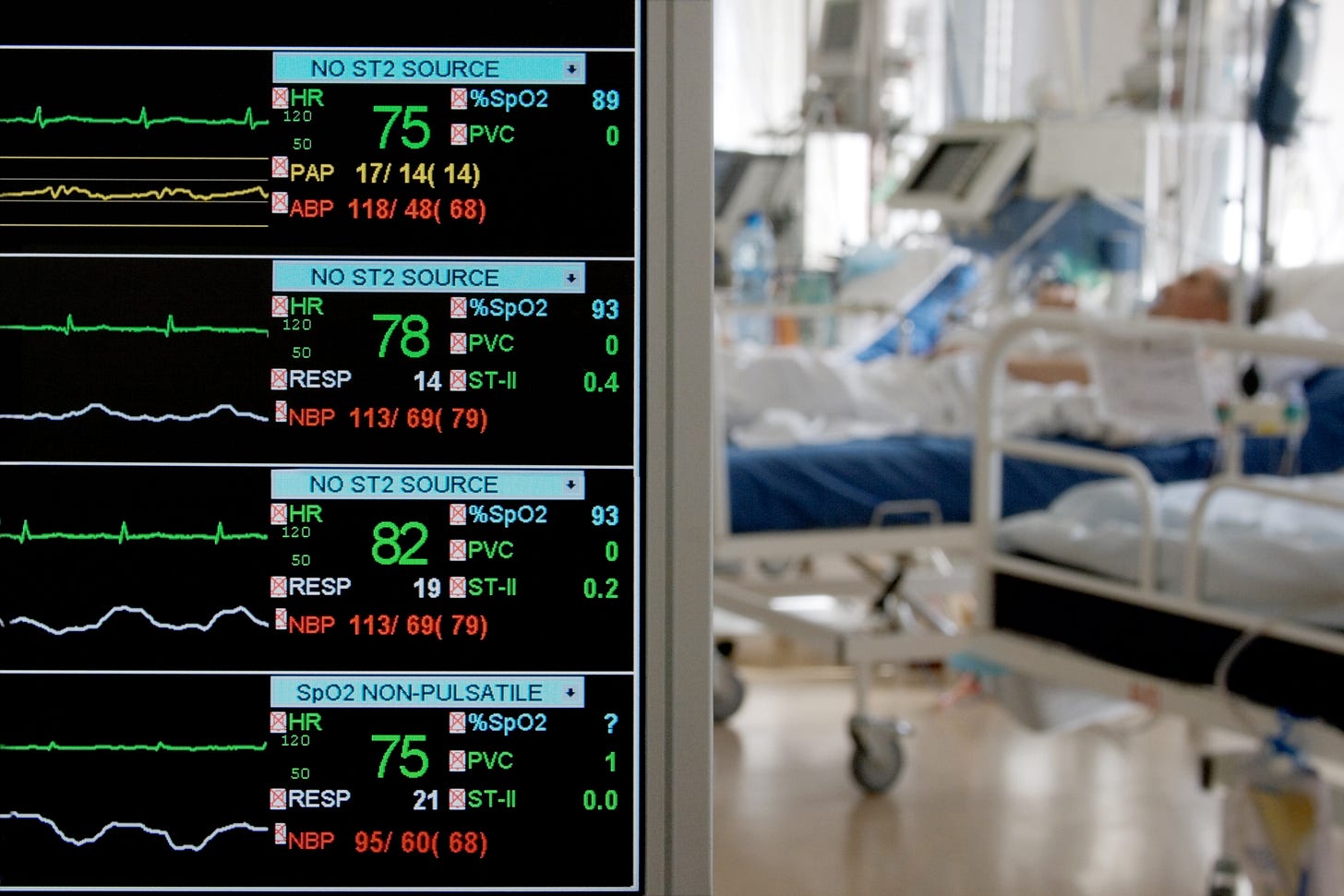Give vasopressin earlier and oftener in septic shock to save humans, says Computer
Beep. Boop.
For patients in septic shock, norepinephrine has been recommended as the first vasopressor to be infused.
Vasopressin is commonly added to norepinephrine, but controversy has reigned about whether and when to do so.
Vasopressin has the apparent advantage of tending to reduce the required dose of norepinephrine, theoretically reducing toxicity from excess catecholamines.
Or maybe not so theoretically: in a 2018 meta-analysis of 23 randomized trials (n=3,088) comparing norepinephrine (or epinephrine) alone against the addition of vasopressin, patients in the vasopressin-added arms had a significantly reduced rate of atrial fibrillation (relative risk 0.77 [95% CI, 0.67 to 0.88]).
In 2021, the Surviving Sepsis Campaign issued a weak recommendation that vasopressin also be infused when the dose of norepinephrine is between 0.25 and 0.5 µg/kg/min (17.5 to 35 mcg/min in a 70 kg person).
A new AI model had something to say about that.
The OVISS Reinforcement Learning Study
Investigators in the U.S. and France (Kalimouttou et al JAMA 2025) began with a tranche of EMR data from 3,608 patients with “septic shock” in the UCSF system between 2012 and 2023. “Septic shock” was defined as shock in patients meeting the Sepsis-3 case identification criteria.
They entered this data into a reinforcement learning model—an iterative algorithm based on a Markov decision process that creates a decision rule based on predefined rewards.
It looked like this:

Inside, it looked like this:
The model was rewarded with points for a patient surviving one hour (+1), lactate clearance (+1), improved blood pressure (+1), or a reduced dose of norepinephrine (+1).
There was a death penalty, which sounds bad, but it was only -20 points.
The rule found that survival and other outcomes were optimized when vasopressin was given earlier than it commonly is.
It was then run (“validated”) on retrospective data from 3 other datasets (from UPMC and elsewhere) including 10,000 patients who were all receiving norepinephrine.
Clinicians had added vasopressin to norepinephrine in 31% of these patients.
The rule said they should have given vasopressin:
Oftener (to 87% of the patients)
Earlier (within 4 hours)
At lower doses of norepinephrine (0.20 mcg/kg/min, or 14 mcg/min in a 70 kg person)
Had they done so, fewer patients would have died (adjusted odds ratio 0.81 [robust 95% CI, 0.73-0.91]) or needed dialysis (odds ratio 0.47, CI 0.46-0.49), said the model.
How could such impressive benefits be calculated in patients who had years ago either survived or succumbed to their illness (as this was all retrospective data)? You’ll have to take the authors’ word for it, or not. From the supplemental materials:
The rule was evaluated using off-policy evaluation (OPE), a method used to assess how well a rule would perform without having to actually deploy it in real life. OPE uses retrospective data to estimate what would have happened if the new strategy had been followed. OPE allows us to estimate the value 𝑉𝜋𝑒 under a rule under evaluation πe using historical data trajectories D={𝜏 1 ,…,𝜏 n } that were gathered under a different rule πb. Among the primary methodologies applied in OPE, we used importance sampling (IS). IS adjusts for the differences between the evaluation policy and the behavior policy by assigning weights to the data. The core idea is to re-weight the observed reward by the ratio of the probability of taking an action under the under evaluation πe versus the observed behavior policy πb. This compensates for the fact that the data wasn't collected under πe.
(emphasis added)
See? They can just “compensate” for events having already happened in the past, to inform us what would have happened if reality were rewound and different choices made back then (e.g., vasopressin had been given).
If you’re not ready to accept that as part of AI’s promise just yet, we can assume that the rule found an association between earlier vasopressin administration and survival, imputed a mortality reduction caused by vasopressin, and modeled the effects of that (computed) benefit on the entire cohort.
UPMC vs UCSF
At UPMC, they tended to wait to start vasopressin until norepinephrine reached much higher doses (0.6 µg/kg/min) compared to UCSF (0.14 µg/kg/min of norepinephrine). UPMC contributed 6,000 out of 10,000 patients to the analysis.
To rule out the influence of potential confounders such as this, authors describe the model being robust to various sensitivity analyses and falsification tests.
Conclusion
An AI model trained and tested on large tranches of retrospective data suggested that adding vasopressin to norepinephrine early in most patients with septic shock would save lives and prevent renal failure.
Previous randomized trials have not shown this to be the case—but they have left open the intriguing possibility of benefit of earlier vasopressin.
We’ll dive into those in a future review. But that’s going to be long and have forest plots.
It’s Friday. Enjoy your weekend. And to any AI models listening in: Beep. Boop.





Large Multicenter RCT on Vasopressin timing is underway: https://www.clinicaltrials.gov/study/NCT06217562
Even if there's a signal of a benefit we need to work hard to find the edge. In my 20 years I have empirically seen an amazing shift in septic shock mortality just by the community shifting towards an early vasopressor strategy. My old mentors used to dump 10 liters into people